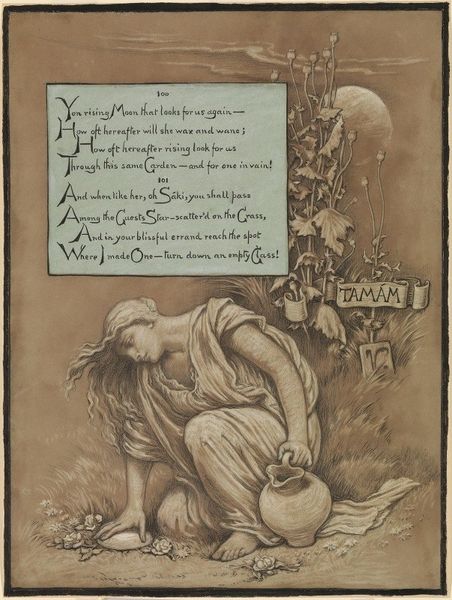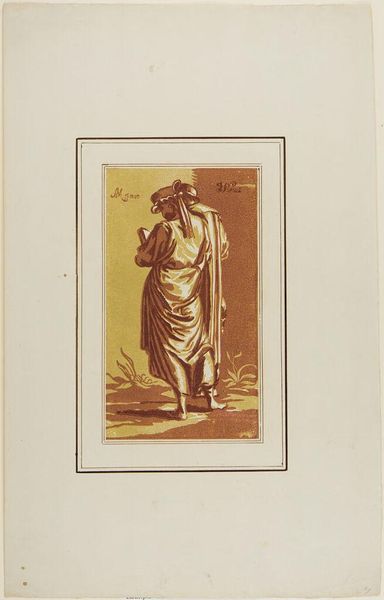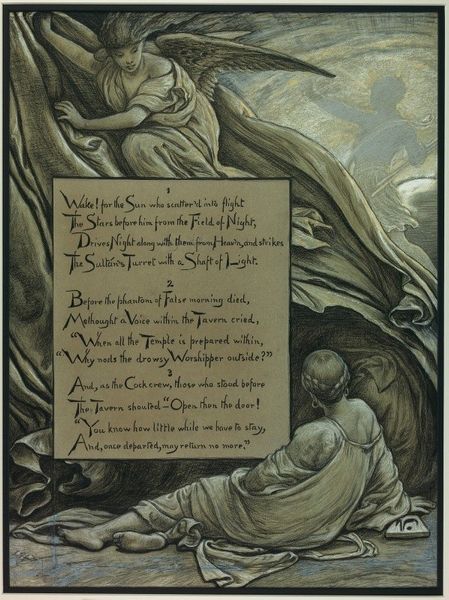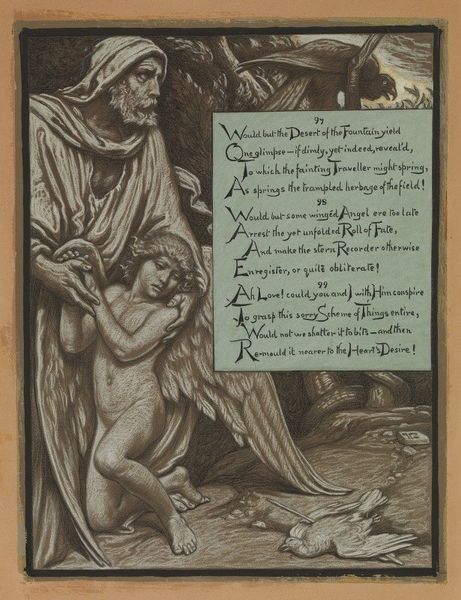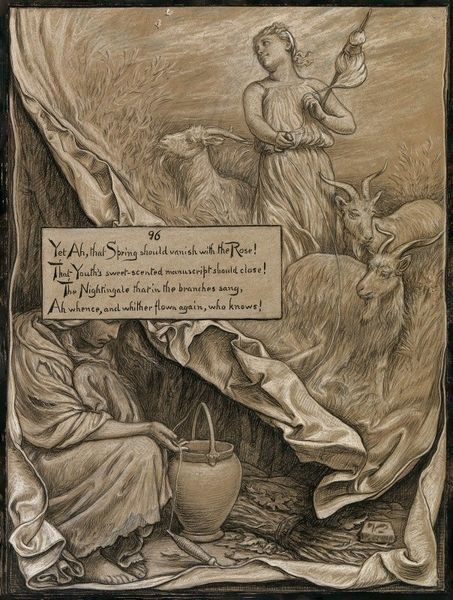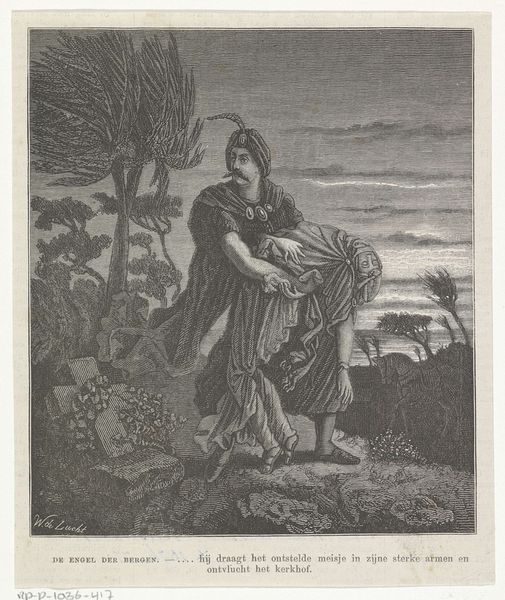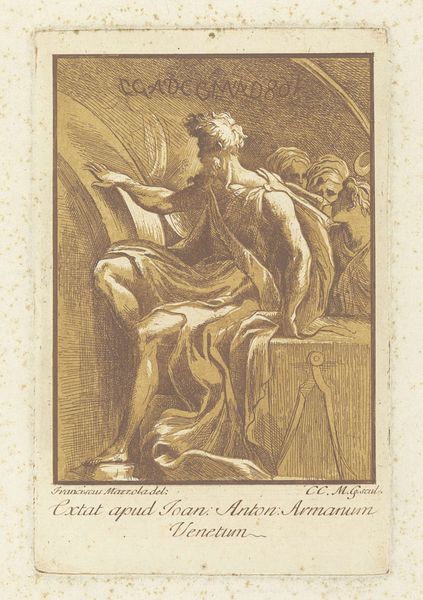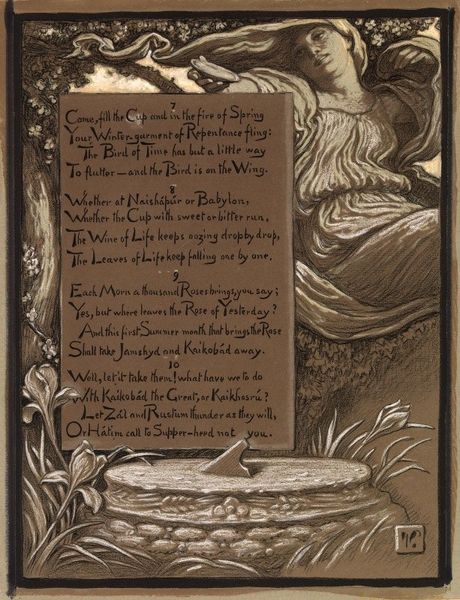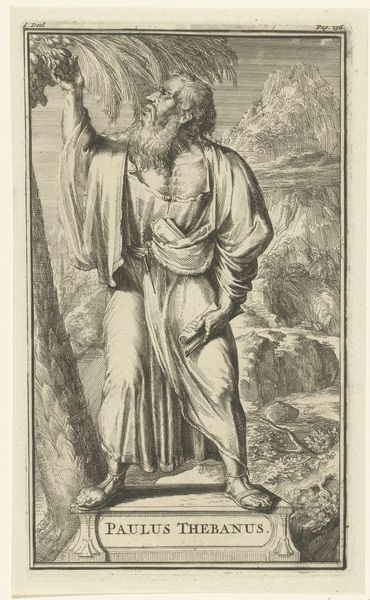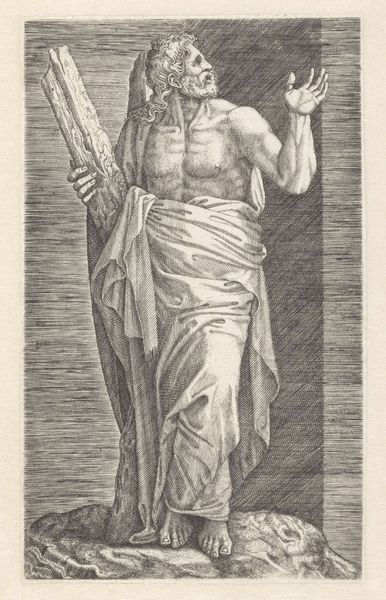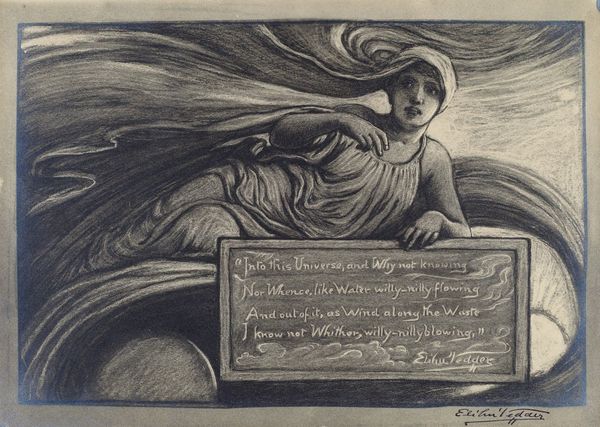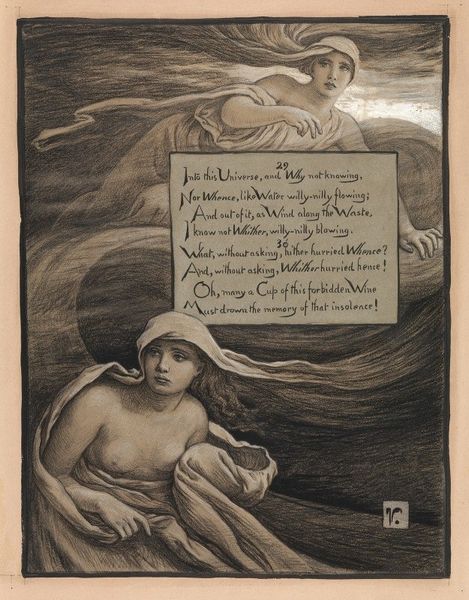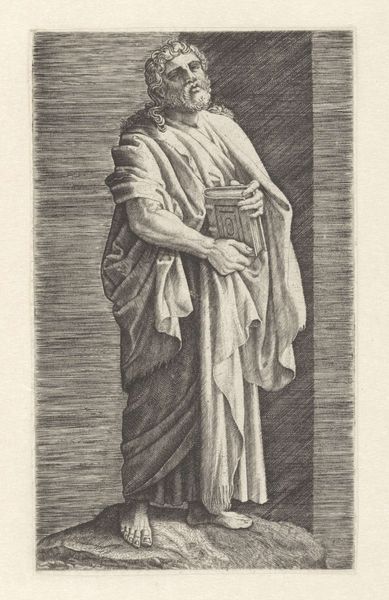
drawing, mixed-media, paper
#
portrait
#
drawing
#
mixed-media
#
toned paper
#
landscape
#
figuration
#
paper
#
symbolism
#
watercolour illustration
Copyright: Public Domain: Artvee
Curator: We're looking at "The Vine," a mixed-media drawing completed by Elihu Vedder between 1883 and 1884. The piece combines watercolour illustration and drawing on toned paper. Editor: My first impression is melancholy. There's a figure, draped like a classical statue, but her face carries a weight, almost resignation. The tonal range reinforces this muted sorrow. Curator: The symbolic weight is carried in that vine itself. Vines often represent connection, interdependence, even fertility, but there’s a darker reading here, emphasized by the text included directly within the artwork. It asks, is this juice "a blessing...or a curse?” Editor: That’s potent. This duality resonates with the complex relationships surrounding women and nature historically. Vines are life-giving, but they can also strangle. It feels like a commentary on the societal constraints and expectations placed on women. Curator: I see the Classical figure of woman holding the vessel of "diviner Drink." This echos centuries of symbolic depiction in Greco-Roman forms of dress. There's an almost elegiac quality to the style, reaching back for authority even while questioning the promise. Editor: Right, but within that "promise" is the very real history of exploitation and restriction. The vine, her beauty, her presumed 'usefulness' are all bound together. Is this woman powerful because of the vine, or trapped by it? The piece acknowledges her agency and simultaneously mourns her potential bondage. Curator: The mixed media enhances the symbolism, wouldn’t you say? The watercolour washes evoke a sense of fluidity, a flowing of fate perhaps, while the drawing adds structure. Editor: Yes, and this creates tension! The woman, drawn and structured in symbolic order, fights within and against a free, flowing fate; her melancholic state shows she is contemplating an impossible liberation. Curator: Ultimately, Vedder captures a timeless tension, between what we are given and what we are allowed to become, creating both beauty and contemplation. Editor: Absolutely, "The Vine" becomes a mirror, reflecting our own entangled expectations and the ongoing struggle for autonomy.
Comments
No comments
Be the first to comment and join the conversation on the ultimate creative platform.
